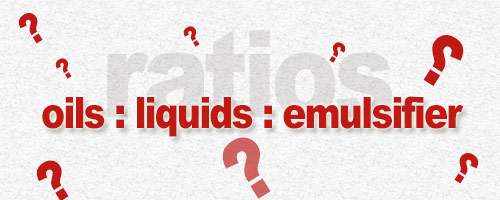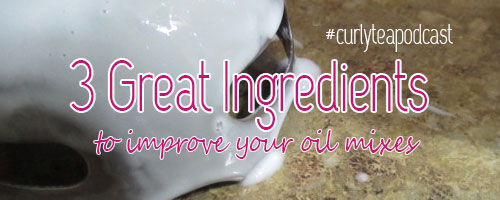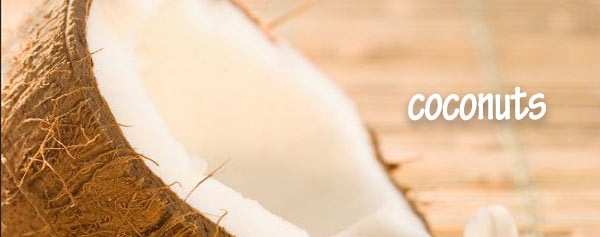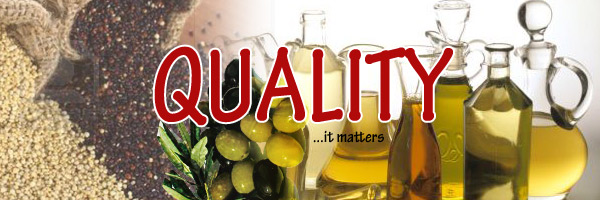Dec 2014 – There are a few important ratios I’ve come to rely on particularly in the past few months or so when creating my most recent batches of DIY mixes. As smart as you guys are, I’m sure you’ve already noticed these before though. 😀
The one you should be most familiar with is the ratio of emulsifier to thickener. I’ve experimented with all kinds of percentages and ratios, as you can tell from the recipes posted here.
However, the one which seems to be the most consistent is one dealing with using an emulsifier at 6% or less.
#1: If you use 6% BTMS or less, use half that percentage for your thickener to make a thicker cream
For example, for a nice stable cream:
EMULSIFIER THICKENER
6% BTMS-50/BTMS-25 to 3% Cetyl / Behenyl Alcohol
5% BTMS-50/BTMS-25 to 2.5% Cetyl / Behenyl Alcohol
4% BTMS-50/BTMS-25 to 2% Cetyl / Behenyl Alcohol
UPDATE: I don’t use traditional waxy thickeners that much at all anymore. If you want your mix to be thicker, a combination of butters, emulsifiers and/or polymers work well. The method prevents the ‘soaping effect’ from happening where tons of white cream stays atop the hair for an extended amount of time until it absorbs. The thickness and stability of your DIY product will increase if you also use butters and waxes in those recipes. However, be wary of a possible “draggy” feeling if you use too much wax (beeswax, candelilla wax, sunflower wax, etc)
Once you use a different emulsifier, like Olivem1000, these values may or may not work. Olivem1000 is exceedingly good at making gorgeous creams. It creates them all by itself. So, while you can experiment with Olivem1000, just know that the tip above may cause your DIY mix to be too thick or too heavy.
Join The Community!
Become a member to access all the formulas and recipes now!
#2: Use an emulsifier at 25% of your oil phase
Update: This tip may be useful for more traditional, regular emulsifiers. New and improved emulsifiers don’t necessarily need this tip in order to work well. This is a tip I thought only worked well when using Polawax as the emulsifier. However, it works pretty well for BTMS too. For example, for a nice stable cream your oil phase may look like this:
OIL PHASE
10% Sweet Almond oil
5% Shea Butter
3% Macadamia nut oil
2% Alkyl Esters
===============
20% TOTAL
The mix is made up of 20% oil-soluble ingredients.
Now, apply tip #2 where you use 25% of the oil phase:
20% x 25% = _________
0.20 x 0.25 = 0.05
0.05 x 100 = 5% (multiplying by 100 tells you the final percent number)
(ie 25% of 20% is 5%)
SO,
If your oil phase is 20%, your emulsifier amount should be at least 5% to make a nice stable cream.
Let’s try it again with different amounts. For example:
OIL PHASE
4% Avocado oil
3% Olive oil
3% Cera Bellina
2% Cocoa butter
2% Caprylic Capric Triglycerides
================
14% TOTAL
The mix is made up for 14% oil-soluble ingredients.
Now, apply tip #2 where you use 25% of the oil phase:
14% x 25% = ___________
0.14 x 0.25 = 0.035
0.035 x 100 = 3.5% of BTMS
(ie 25% of 14% is 3.5%)
But wait! 3.5%? Isn’t that too low?? Here’s where it gets tricky. 3.5% is not too low when you’re using BTMS-50, although your mix may be more liquidy. But certainly, I’d never use 3.5% of Polawax or Olivem1000, or regular e-wax unless I was also going to be using a thickener (like cetyl alcohol) with it.
HOWEVER, look at the recipe again. You see where it’s using “Cera Bellina” and “Cocoa butter”? Cera bellina is a modified version of Beeswax. So it will help (even a little bit) with keeping the mix together. Cocoa butter as well helps to thicken and stabilize your DIY mix.
Thus, you can end up with a very good cream even with using 3.5% BTMS.
#3: If your entire OIL PHASE will equal less than 15%, using butters and other thickening ingredients helps give it a nice, thick, substantial feel
For example, if you want a nice cream without using a high percentage of oils, using butters and heavier liquids can give it to you:
OILS PHASE
3% Castor Oil
4% Cocoa Butter
3% Kokum Butter
2% Shea oil (or butter)
==================
12% TOTAL
This recipe above is only made up of 12% oils/butters. But you will get a thicker cream because you used harder butters like Cocoa and Kokum.
Of course you already know how great Cocoa butter is! Kokum butter is naturally hard and brittle. Although it remains hard at room temperature, it melts slightly upon contact with the skin. It adds stability to mixes and whipped butters and is often used as a slight harder substitute for the aromatic Cocoa butter.
A recipe using both Kokum and Cocoa butters will certainly be thicker than if you made the same recipe using light oils like Hazelnut oil, Macadamia nut oil, Kukui Nut oil and Sunflower oil.
And what about that 12% oil phase? If you’re looking for a starting place for how much emulsifier to use, try the 25% rule mentioned earlier:
12% x 25% = _________
0.12 x 0.25 = 0.03
0.03 x 100 = 3%
So you’ll need at least 3% BTMS. Remember what I wrote earlier about BTMS and creams in the 1st TIP above? If you want a nice cream and your BTMS amount is less than 6%, add a thickener (cetyl alchol, stearyl alcohol, behenyl alcohol). The thickener should be AT LEAST half the percentage of your BTMS amount.
Thus:
3% BTMS to 1.5% Cetyl / Behenyl alcohol
So now let’s plug that into the recipe:
OILS PHASE
3% Castor Oil
4% Cocoa Butter
3% Kokum Butter
2% Shea oil (or butter)
3% BTMS
1.5% Cetyl alcohol
If you’ve seen arcamp83’s famous detangling leave-in she made with BTMS, she used the exact same percentage of BTMS and Cetyl alcohol. That’s certainly fine too if you want to make sure the mix remains stable.
#4: Good lotions and lotion-type hair milks contain AT LEAST 70% water, aloe vera juice or tea
You should already be familiar with this information. To make a lotion, make sure your DIY mix contains at least 70% water, aloe vera juice, or tea. So you can literally start here:
70% water(s) to 29% other stuff to 1% preservative
However you put the recipe together, it’s a good idea to have at least 70% water/aloe/tea. In addition, if you want it to be a true lotiony product, try to skip thicker butters OR use very small percentages of them.
#5: Your amount of oils CAN be too high for the amount of emulsifier you’ve chosen to use
It’s true the oil phase can be too high for the percentage of emulsifier you’ve chosen to use. Some emulsifiers are meant for oil-in-water emulsifiers (more water than oil), or water-in-oil emulsifiers (more oil than water). However, if you simply haven’t used enough of the emulsifier you’ve chosen, the mix is going to separate even if you used the right emulsifier.
For example, check out this recipe:
WATERS
—————–
72% water
OILS
—————–
10% shea butter
15% olive oil
2% BTMS
COOL DOWN
—————–
1% preservative
The emulsifier, BTMS, is only used at 2% in a recipe made up of 25% oils. Notice that we’re using BTMS by itself with no additional thickener.
This emulsion may not form at all, or it may separate within a few days because 2% may be too low for the oil amount.
Remember TIP #2 about using your emulsifier at 25% of your oil phase? Let’s find out how much emulsifier is a good amount for this recipe.
OILS
15% shea butter
10% olive oil
==============
25% TOTAL
25% x 25% = ________
0.25 x 0.25 = 0.0625
6.25% BTMS
6.25% is nice if you’ve using BTMS as the only emulsifier. In addition, you’ve reached the magic BTMS threshold of 6%. For me, this usually means I can just use 6% and come out with a nice emulsion. Depending on the oils/butters I’ve chosen to use, it’ll either be thick or lotion-like.
These are just a few of the ratios I’ve noticed, especially in the past few months. Don’t be alarmed, however, if you see a recipe posted at curlytea.com which doesn’t quite fit these “rules”. Chances are there is some additional ingredient or some process which made it a successful mix.
What about you? Have you experimented with the ratios of your mixes? What have you found to be the best ratio of oils to liquids? Have you also found that using butters help to stabilize your DIY mixes?
Keep experimenting to find out your perfect go-to ratios to make the best DIY recipes you can make!
@curlyteaconsult





Do you need to add a thickener if you use 6% of BTMS?
Well, you don’t necessarily have to add a thickener even with a smaller percentage of BTMS-50. 6% of BTMS-50 is the max I’ll go. Anything higher just seems like a waste of BTMS-50. It has some thickening agent in it already, but it won’t be as thick as if you added a separate thickener like Cetyl alcohol or Behenyl alcohol.
Whether you add a thickener is determined by how thick or loose you want your final cream to be, but there are many other factors to consider.
If you want to make a heavier, more substantial looking cream, you can add a thicker. But be mindful of your recipe and the other ingredients involved. A recipe with a very high water content (like 80%+) may feel light even though the cream looks thick.
Many thickeners only change the viscosity of the final product. If you want a heavier, more substantial FEEL in the hair, you can use a thickener along with heavier oils (like castor) and butters (like shea). Also, skip the additives which are meant to cut down on the ‘greasy feel’ (like Caprylic Capric Triglycerides and Alkyl Esters) for a cream that will leave a slight oily cast (that’s how we make those creams that last for a few days in the hair after just 1 application).
Also note that creams with thickeners like cetyl and behenyl can leave a white cast on the hair before it finally absorbs.
Anyway, whatever you decide it’s important to experiment! You may like a cream with 6% BTMS-50 and no thickener better than a cream with 4% BTMS-50 + thickener. 🙂
The most informative and simplified content I’ve seen so far in Emulsifier and thickeners.
Thanks alot
So if you have 12% oil @ 25% e-wax would a good combination be 3g glycerol stearate & 1.5g BTMS?
It seems like a waste to use e-wax and BTMS. Just use BTMS if making an oil-in-water emulsion. You don’t have to worry about using “25% of the oil phase” recommendation because there are better emulsifiers on the market than e-wax.
For a water-in-oil emulsion, add glyceryl stearate or, better yet, a combination of emulsifiers for water-in-oil emulsions. If you go with glyceryl stearate, please try to get the “Glyceryl Stearate SE” which is a self-emulsifying version. That means it makes more stable, thicker emulsions.
I can’t tell you how many grams to use for each without knowing the full size you’re trying to make.
Ok sorry I think I wasn’t as thorough as I thought. However, you did educate me as I had no idea SE was self-emulsifying. But on a small 100g batch. 12% oil at the 25% recommended ratio for emulsifiers would be 3%. So I was asking if you thought 3g of Glyceryl Stearate SE & 1.5g of BTMS would yield a decent creation? I’m a newbie & the emulsification process its frustrating for me. Can’t seem to produce what I’m looking for. Lol sorry to be so meticulous
The usage rate for Glyceryl Stearate SE varies depending on the supplier. ITDF’s Glyceryl Stearate SE (GMSE) has a recommended usage rate is 5- 15%. So 3% Glyceryl stearate my not be enough to make a stable emulsion, especially if you’re using less than 2% BTMS. At makingcosmetics.com, the recommended usage rate for Glyceryl Stearate SE is 1-10% (which may or may not allow you to get away with using 3%). You’re just going to have to experiment and keep a record of what works and what doesn’t. I would never use BTMS-50 at anything under than 3% at this point, even with other emulsifiers because it’s also a conditioning ingredient. Try 4% Glyceryl Stearate with 3% BTMS. Don’t get tripped up with that “25% of the oil phase” rule. Advancements in older emulsifiers and the type of new emulsifiers they’re coming out with is starting to make that old advice obsolete.
Ok thank you so much. This really helps. Peace & love.
What can I use to avoid separation of oils and water when making a growth mist. In this instance, I want the mixture to be watery so it can easily go through the spray pump. I have btms-50 as an emulsifier. I’m looking at 85% water phase and 15% oil phase…. Please advice….
To make sure you don’t have to worry about anything thickening, you may want to try liquid oil-in-water emulsifiers. You can also look at emulsifiers known for their “shear thinning” properties. (That just means things made with this ingredient thin out easily with any type of force.)
There is one liquid emusifier from researching at makingcosmetics.com that can allegedly create sprayable gel-like emulsions:
1. GelMaker NAT – https://www.makingcosmetics.com/GelMaker%C2%AE-NAT_p_1420.html
I’ve used 2 liquid emulsifiers, but never to make a sprayable emulsions. However, if you focus on percentages, you can try one of these:
1. Creammaker FLUID (nonionic) – https://www.makingcosmetics.com/CreamMaker%C2%AE-FLUID_p_965.html
2. Creammaker ANIO (anionic) – https://www.makingcosmetics.com/CreamMaker%C2%AE-ANIO_p_1007.html
Lotioncrafter.com has a free sprayable lotion recipe here:
https://lotioncrafter.com/blogs/skin-care/light-sprayable-lotion
However, some of those ingredients you may not have or may want to skip. In that recipe, they use a combination of glyceryl stearate, cetearyl alcohol (nonionic thickener), and Ceteareth 20 (nonionic) at low percentages, making up about 3.3% of the formula. You can try a combination of emulsifiers/thickeners at low percentages to try to get what you’re looking for.
Whatever you use, make sure you take note of the pH range required to maintain the emulsions. Not only can using too little emulsifier cause instability, not sticking to the pH recommendations can also cause emulsions to separate. Using ingredients with the wrong type of charge together (anionic, cationic etc) can also cause emulsion separation.
Each ingredient has it’s own pH range which makes optimal emulsions. For example, the final pH for a product made with Gelmaker NAT can be between pH 4-12. But for GelmakerStyle, the pH needs to be between pH 5-7.
For Creammaker ANIO, the product’s final pH needs to be between pH 4 -9. But for Creammaker FLUID the pH needs to be between pH 5-9.
So in addition to picking out the right emulsifier for the final viscosity you want to achieve, you have to focus on the pH requirements of that particular ingredient. Whether it has “shear thinning” properties is good to know too. Anyway, I’m sorry I couldn’t be of more help.
Hello, I found these tips really helpful, thank you so much and God bless!
Hello I was wanting to know do you have to use water when making your own hair products ??
How to use water in recipes?
In 2021. This is awesome information. Really learning alot
This is so insightful, in making a diy lotion, what influences your decision on the % usage of oils in your lotion?
Hi! For lotions, I usually start with the end-feeling I want. Do I want the lotion to be light? Do I want it to have ‘play time’? Do I want it to absorb very quickly? Do I want it to have a much more substantial after-feel and stay on the skin for an extended period of time?
Then I decide what I want the percentage of diluent (water/aloe/tea/etc) to be. Usually that’s somewhere around 70%. From there, I think about which oils I’m going to use and whether they are “oily” or absorb quickly. You have a little more leeway with quick absorbing oils. You can use more of them. 15-20% is good. However for heavier oils, like Olive or Castor, keeping those lower may work better for lotion recipe. For example, nowadays I don’t think I’d use over 2% of olive oil in a body lotion, if at all.
You also have to take into account what your emulsifier can handle. If using an emulsifying polymer as the main emulsifier, you have to keep a record of what the manufacturer says is the max oil load it can handle, and try to stay below that.
You can also decide to use oil alternatives/silicone alternatives (esters) as your ‘oil’ portion to keep the feel light on the skin. Or, a combination of regular oils/butters and esters. For example, 3% Sunflower oil and 10% of any ester you like. You can even use a combination of esters and regular oils or butters. For example, say you want to use 10% oils then you can use: 5% Caprylic/Capric Triglyceriedes, 3% Sunflower oil, 2% Isoamyl laurate.
If you want a more substantial feel, you may want to go up to 18-20% oils. Then you can decide how you want to combine the oils.
This is SOO BEAUTIFULLY SIMPLIFIED!! AND HOW NEEDED is this information!! Thank you SOO MUCH for not only sharing this info., But also breaking it down in such an easy to understand way!! What a blessing! Thanks for ALL you do and share!